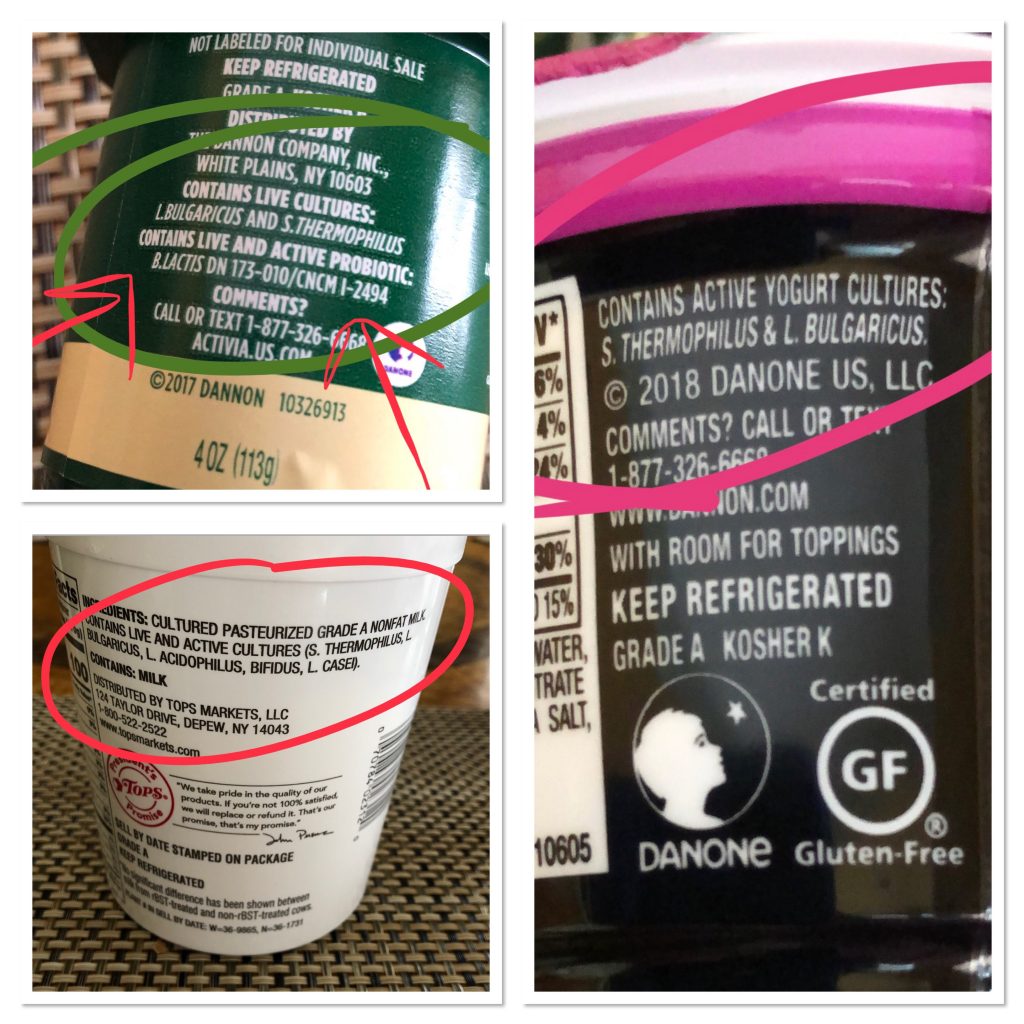Probiotics. You’ve probably heard about them. People toss the term around in a positive context: “You need probiotics. They’re good for your gut!”
But what are they? What types of probiotics are out there, how do they work, and what should you be looking for? I recently attended a conference session presented by Dr. Anthony Thomas and sponsored by Jarrow Formulas that threw my own understanding for a loop. You see, going into this session my understanding was that probiotics were mostly judged by quantity and availability. When you see numbers such as “5 billion cultures” it seems like a good thing right?
It is, but I also learned that the strain of the probiotic is important, and that not all good bacteria have probiotic properties. Checking labels, I realize that some foods or supplements include a probiotic, and identify the strain, and others may not.
Probiotics and Health: The Strain Matters
Research on the health benefits of probiotics is ongoing. Some studies have linked a positive relationship between probiotics and depression. There have also been mice studies suggesting how probiotics can impact blood pressure. Gut microbes may even impact the risk of stroke.
I truly find the research about our gut microbiota to be a fascinating new frontier in medicine and treatment of disease. There will be a lot more to come which is why the focus on probiotic strain will likely be very important for future treatment models.
Probiotics and the Gut
Probiotics are live microorganisms that promote a health benefit, such as healthy bowel function in the gut.
Research about gut microbiota has been ongoing for several years. Disruption of the gut microbiota has been associated with poor health. The theory is that probiotics can help restore the normal microbial environment in your intestines. If that sounds too simple, you’re right – it’s complicated. Not all probiotics will have the same impact on your gut or your health, but the bacteria in your gut impacts your health.
It may be that you aren’t “what you eat” but more like “You are what the microorganisms in your gut produce after you eat”.
A Quick Bio Refresher
Remember all of those Latin terms, family, genus, species…in animals? Well, bacteria also follows its own taxonomy. Even though the bacteria of the same species may share characteristics, their function differs by strain.
Many of you may be familiar with Lactobacillus acidophilus. It’s a bacteria found in the human body. Lactobacillus is the genus, acidophilus is the species. There are many strains. The strain may appear at the end of the name, and may be noted with letters or numbers.
How Can I Get Probiotics Into My Diet?
Bifidobacterium and Lactobacillus are two common probiotic bacteria. Probiotics can be found in foods such as sauerkraut, kimchi, miso, aged cheeses, kefir (a fermented dairy drink) or yogurt. You often hear “Eat yogurt for probiotics”. This is sometimes, but not always true. All yogurt is a good source of calcium, protein and potassium, but it may not always contain probiotic bacteria, and it may not always be labeled. You may also not know what strain of probiotic is present in sauerkraut, for instance, either (although it’s high in Lactobacillus).
The Activia® Yogurt in the photo here lists L. Bulgaricus and S. Thermophilus, and also the active probiotic B. Lactis with strain numbers (Bifidobacterium lactis DN-173 010/CNCM I-2494). While probiotic strain is important, not all brands will list the strain, even if they know what it is. This may change as we learn more about strain.
Lactobacillus (genus) bulgaricus (species) and Streptococcus (genus) thermophilus (species), are used to create yogurt. The Oikos® Triple Zero contains active yogurt cultures, but not probiotic cultures. The other store brand Greek yogurt doesn’t list strain either, but may contain an active probiotic strain. I encourage you to check the labels on your favorite yogurt and other potential probiotics.

In addition to yogurts with added probiotic strains, you can take a probiotic supplement with identified strains. As the research gets stronger, it will likely become more clear which strain is associated with which health benefit (memory, mood, blood pressure, reduced stroke risk, or anti-aging benefits).
Devil in the Details
Now that we know there could be a link to better health with proper probiotic products, many companies quickly get on the bandwagon – and they may, or may not, be offering products that are effective and quality-controlled. It’s important to proceed with caution, and seek information from credible sources, and understand that the research is still emerging.
As far as probiotics go, identifying specific probiotic strains is going to be important, however, as you evaluate your choices of probiotics.




